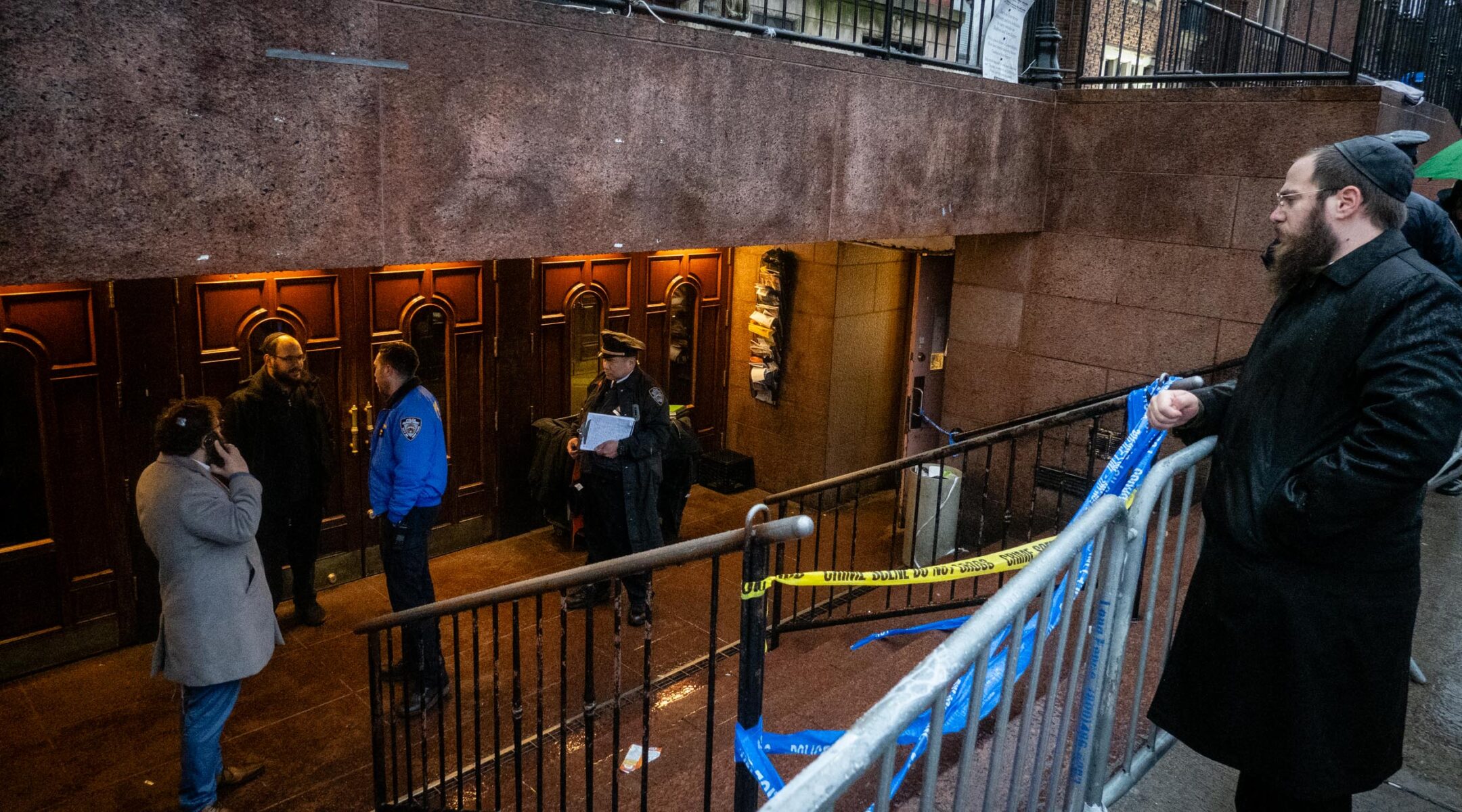(New York Jewish Week) – On Tuesday, a group of Jewish men gathered to pray under a leaky white tent in the drizzling rain outside the Chabad-Lubavitch movement’s world headquarters in Crown Heights, Brooklyn, draping their wet jackets over portable bookshelves and talking about what had happened there the previous afternoon.
As for the building itself, it was closed off. Outside the entrance to the complex’s main synagogue, a line formed in the rain, with Chabadniks waiting patiently to retrieve personal belongings from a storage room. They chatted with police officers — trying to explain to them what tefillin is — who were standing behind metal barricades and blue and yellow tape, letting the men and boys in one at a time.
The headquarters at 770 Eastern Parkway — a symbol of Chabad that is usually bustling with prayer and Jewish study — has been shuttered for nearly two days and counting. On Monday, a small group from the Hasidic movement, acting independently, attempted to break through a synagogue wall — a last-ditch attempt to connect part of the sanctuary to a building next door in order to expand the complex. The incident ended with shouting, scuffles and arrests, as well as concern about the building’s structural integrity.
Leading Chabad officials condemned the incident as the work of an extremist fringe. But the saga has spread far beyond Brooklyn — drawing global attention to internal Chabad disputes, generating international headlines and turning into fodder for antisemitic conspiracies.
“The Chabad-Lubavitch community is pained by the vandalism of a group of young agitators who damaged the synagogue,” said Rabbi Yehuda Krinsky, a prominent community leader, in a public statement. “These odious actions will be investigated, and the sanctity of the synagogue will be restored.”
Here’s what you need to know about the chaos in Crown Heights this week and its aftermath.
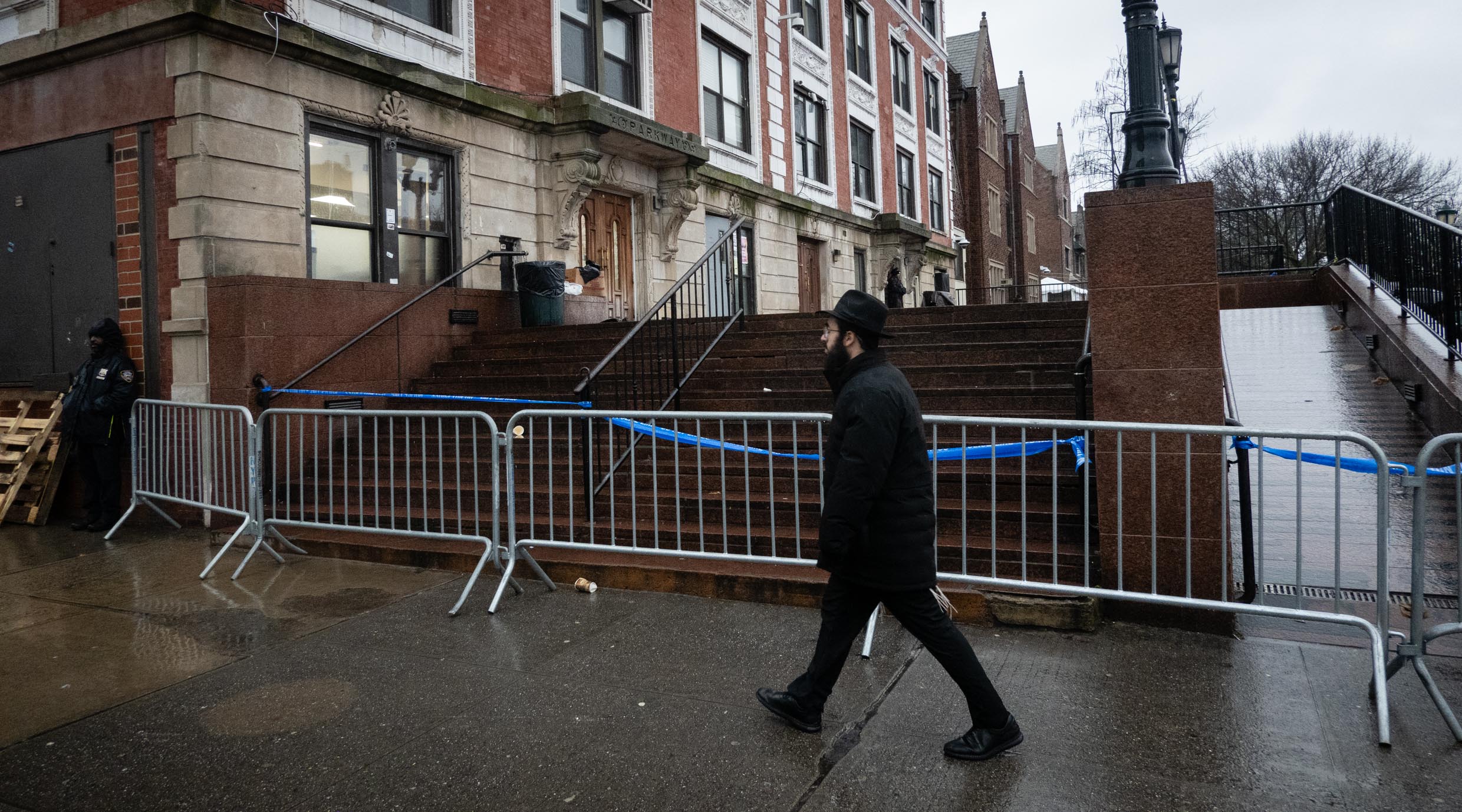
Police block the entrance to the main synagogue of Chabad headquarters due to safety concerns, Jan. 9, 2024. (Luke Tress)
What exactly happened at Chabad’s headquarters on Monday?
Last month, reports surfaced about unauthorized attempts to “tunnel” into a synagogue housed at the 770 complex from a Chabad-linked office building next door. By Monday, said witnesses to the day’s events and a Chabad spokesperson, the construction project had broken through the basement walls of the office building, and a cement truck was called in to repair the damage.
When the group responsible for the unauthorized construction realized the cement would block their attempt to gain access to the 770 complex, they ripped down wood paneling in the crowded subterranean floor of the synagogue. Videos from the scene showed a chaotic crowd of young men shouting, arguing with police, being handcuffed and being removed from the building. Several had retreated into a dark, concrete cavity that had been exposed behind the wood panels.
Around 3:30 p.m., police were called to the synagogue to deal with what an NYPD spokesperson called “a disorderly group” at the synagogue “who unlawfully entered the premises and damaged a wall.”
The NYPD spokesperson said police arrested 12 people and that there were no injuries. Charges include criminal mischief, reckless endangerment, disorderly conduct and attempted hate crimes — though the spokesperson did not have further information on the nature of the alleged hate crimes. The suspects were all between 19 and 22 years old.
The city’s Department of Buildings, which is inspecting the damage, told the New York Jewish Week on Tuesday that “forensic engineers remain on site at 770 Eastern Parkway, and their investigation is ongoing.”
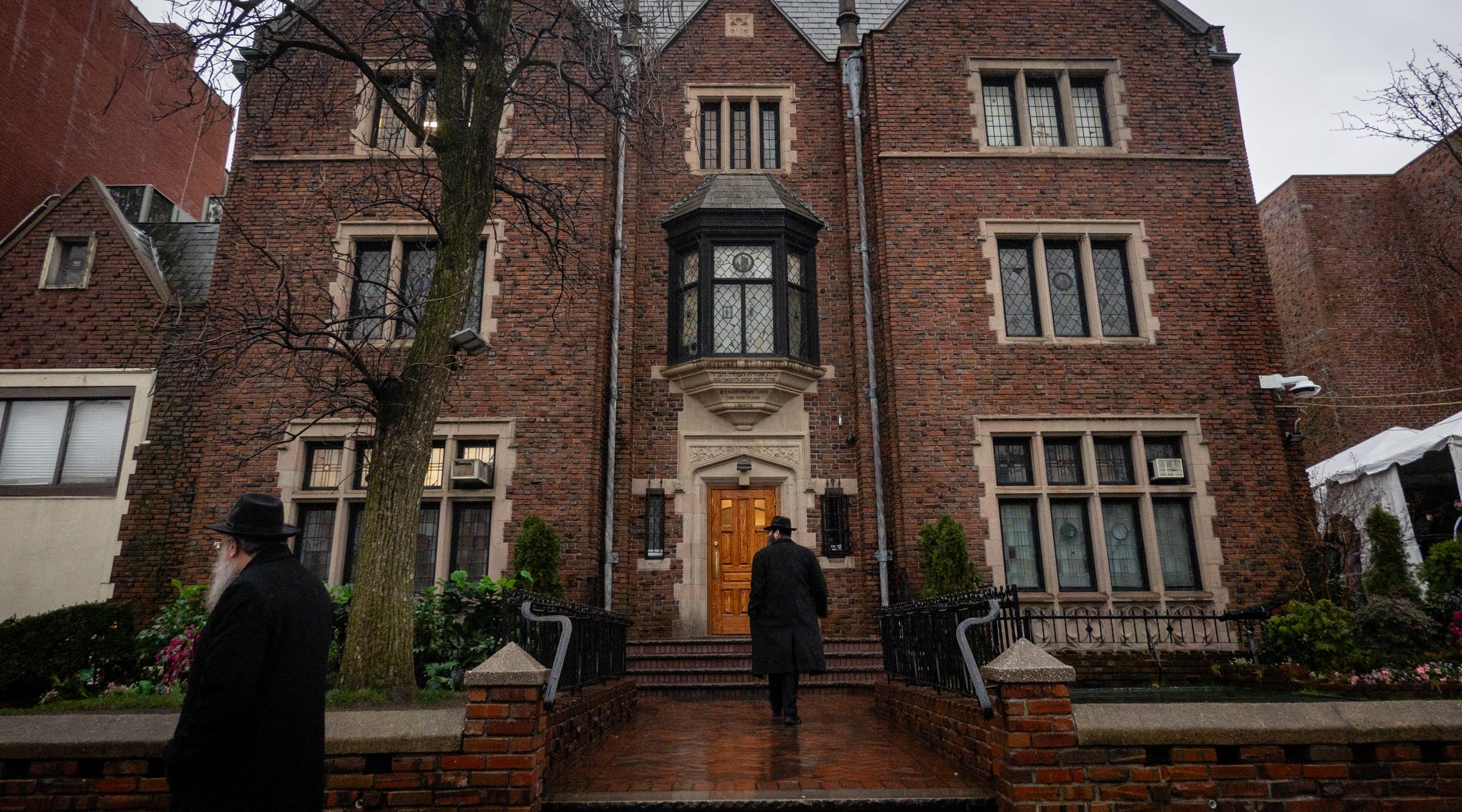
Chabad Headquarters at 770 Eastern Parkway in Crown Heights, Brooklyn, Jan. 9, 2024. (Luke Tress)
What is 770 Eastern Parkway and why is it important to Chabad?
The construction project that came to light Monday is the latest in a number of controversial battles over Chabad’s headquarters at 770 Eastern Parkway. Known to Chabadniks simply as “770,” the building and its address have taken on symbolic significance for the movement and its worldwide network of emissaries.
Replicas of the stately brick three-gabled building can be found across the globe, from Australia to Argentina to a rural Chabad village in Israel. In 2022, a digital version went up in the metaverse. The number “770” has likewise become a calling card of the movement, sometimes literally — it is featured in some Chabad emissaries’ phone numbers.
The building holds meaning for Chabad Hasidim because it served as the office of the late, deeply revered Chabad leader Rabbi Menachem Mendel Schneerson, known as the Rebbe. Previously, it was the home of Schneerson’s father-in-law and predecessor, Rabbi Yosef Yitzchak Schneersohn. Today, 770 is connected with adjoining buildings on its block and houses a synagogue, spaces for Jewish study, offices and a library.
Since Schneerson’s death in 1994, the movement has been without a leader, and authority over his former office has come under dispute. For more than a decade, two different Chabad organizations have battled in court over who controls 770 — with one side appearing to win only for the legal proceedings to continue.
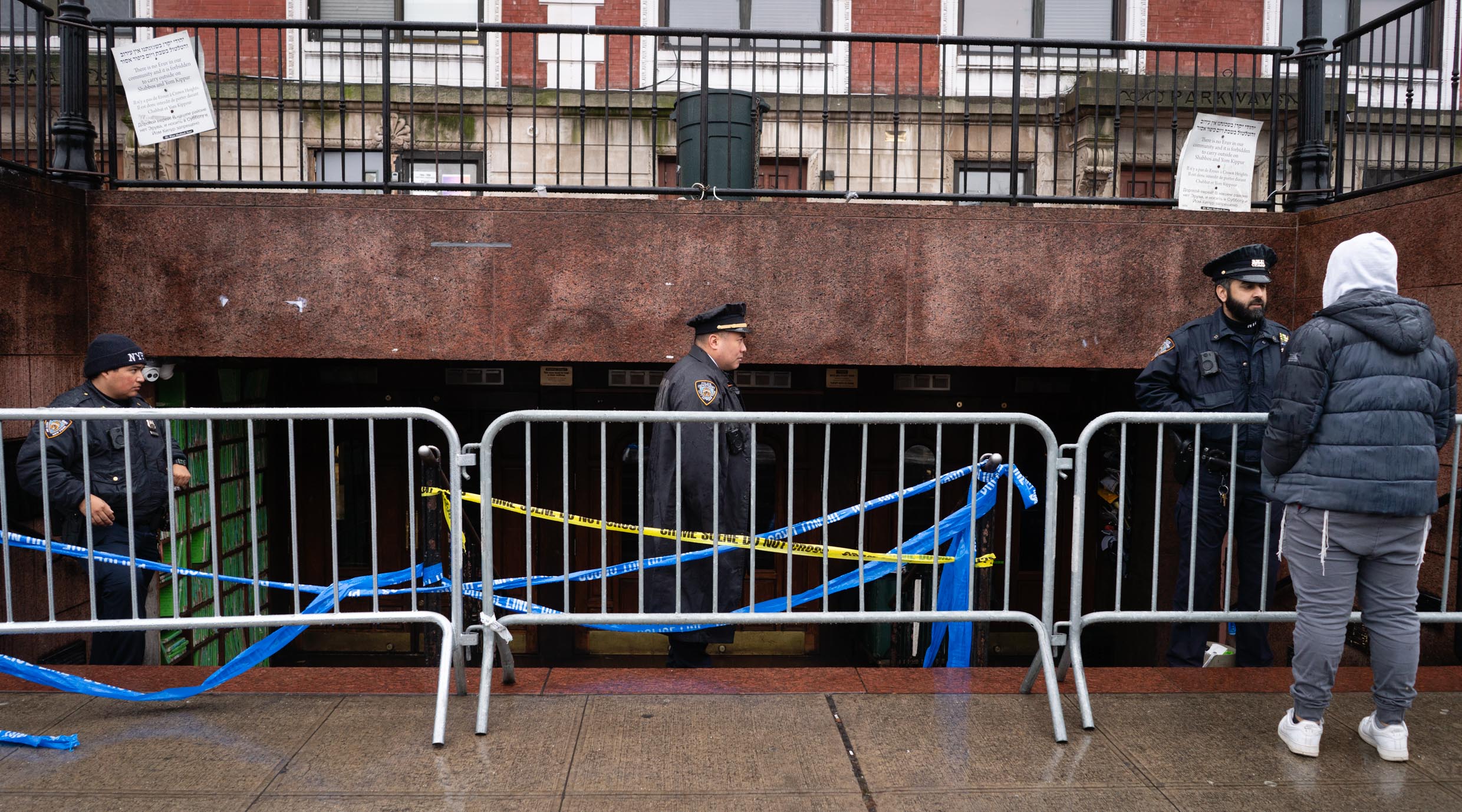
Police block the entrance to the Chabad headquarter’s main synagogue due to safety concerns, Jan. 9, 2024. (Luke Tress)
Part of the Chabad movement has been pushing to “expand 770.”
Monday’s incident is one of a number of efforts to enlarge the building that is not part of the legal disputes detailed above. An initiative founded about a year ago called Expand 770 aims to drum up support to augment the building, citing a call by Schneerson in 1991 regarding the “need and duty to expand and broaden” the movement’s headquarters.
A rendering of the proposed expansion on the initiative’s website shows the original 770 flanked by two large conference center-style halls.
“Everyone wants to come daven, learn and visit in 770, but 770 is way too small for what it needs to be,” the initiative’s founder, Levi Jacobson, said in a video message posted last February. “The Rebbe urged that each and every Jew should participate physically and monetarily with expanding 770.”
Jacobson did not reply to a request for comment and there was no indication that he was connected to the unauthorized construction.
But on Tuesday, standing outside of 770, members of Chabad continued to argue over whether the building should be enlarged. Based on videos of Monday’s incident, the group involved in the construction effort appear to come from a faction of Chabadniks who believe Schneerson is the messiah, known as “meshichists.” A sign with a slogan declaring Schneerson to be the messiah hung on the wall of the synagogue, and multiple people involved were wearing kippahs bearing the same slogan.
Zalmy Grossman, a student from the United Kingdom who lives in Israel, said he had been in the synagogue during Monday’s incident and supported the effort. Grossman did not identify as a meshichist but was wearing a yellow badge associated with that group.
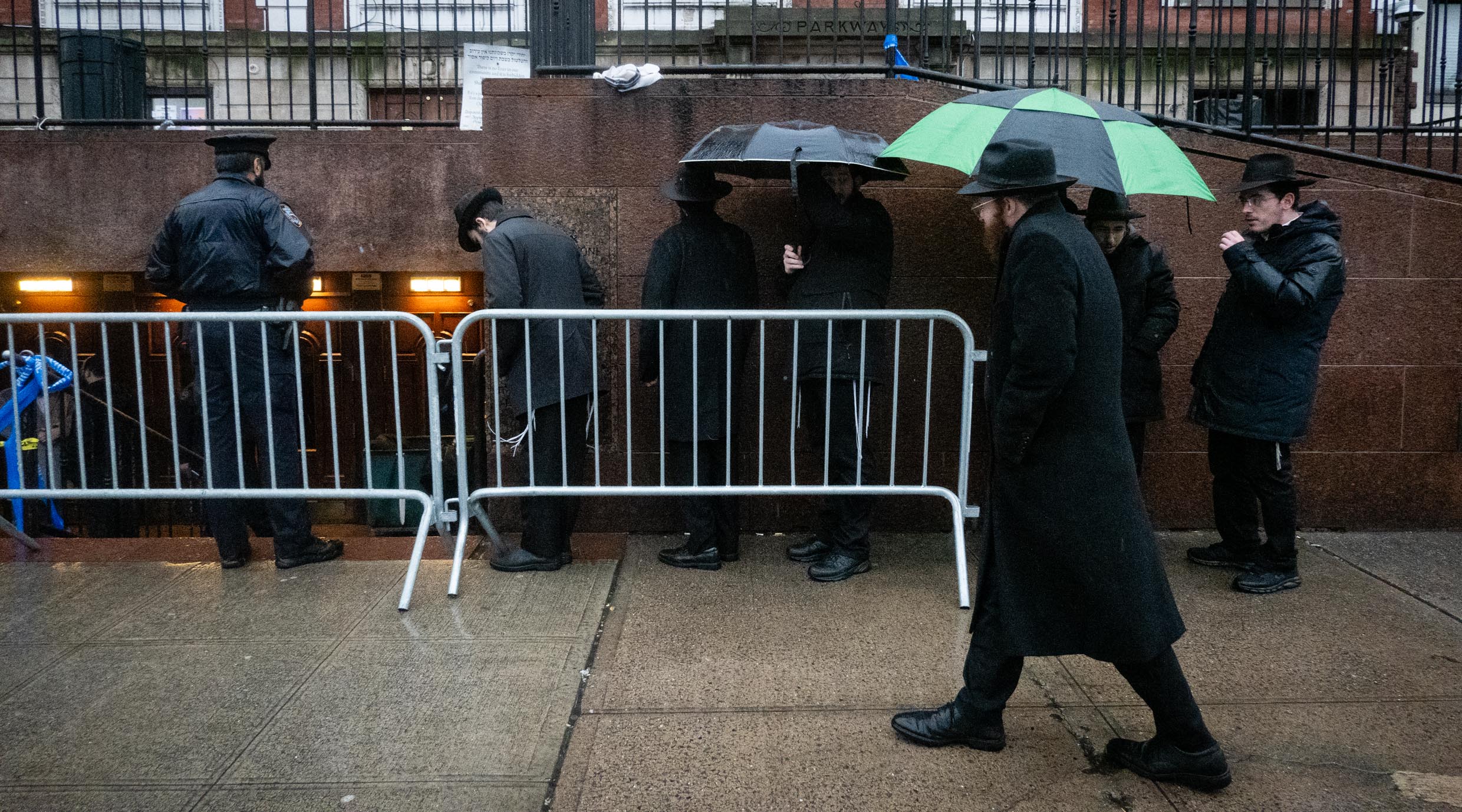
Worshippers line up to retrieve items from a storage room outside the main synagogue at Chabad headquarters, Jan. 9, 2024. (Luke Tress)
“As the holiest place in the world, we have to expand,” Grossman told the New York Jewish Week, saying that he had not been a part of the group that broke down the walls. “The Rebbe, the words of the rabbi, says they need to expand it. The Rebbe is the one in charge. He is Chabad.”
He added, “He’s the only one we listen to, nobody else. The Rebbe’s Chabad and what the Rebbe says — that’s what we do.”
A passerby, holding a black umbrella against the rain, stopped to vehemently disagree.
“What these people did was a travesty. It does not represent Chabad on any single level whatsoever,” shouted the man, who identified himself as Sholom and declined to give his full name, adding that he was at the sanctuary during the incident. “Attacking cops is not endorsed by Judaism. They took holy, sacred Jewish text books, threw them at cops.”
Indicating Grossman, he said, “This guy doesn’t represent anybody.”
Rabbi Yaacov Behrman, who lives in Crown Heights and serves as a spokesperson for the movement, said that the vandalism was carried out by a fringe group and applauded the NYPD’s handling of the incident.
“We appreciate the incredible sensitivity shown by the New York Police Department and their response,” he said. “This is really an example of good police community relations.”
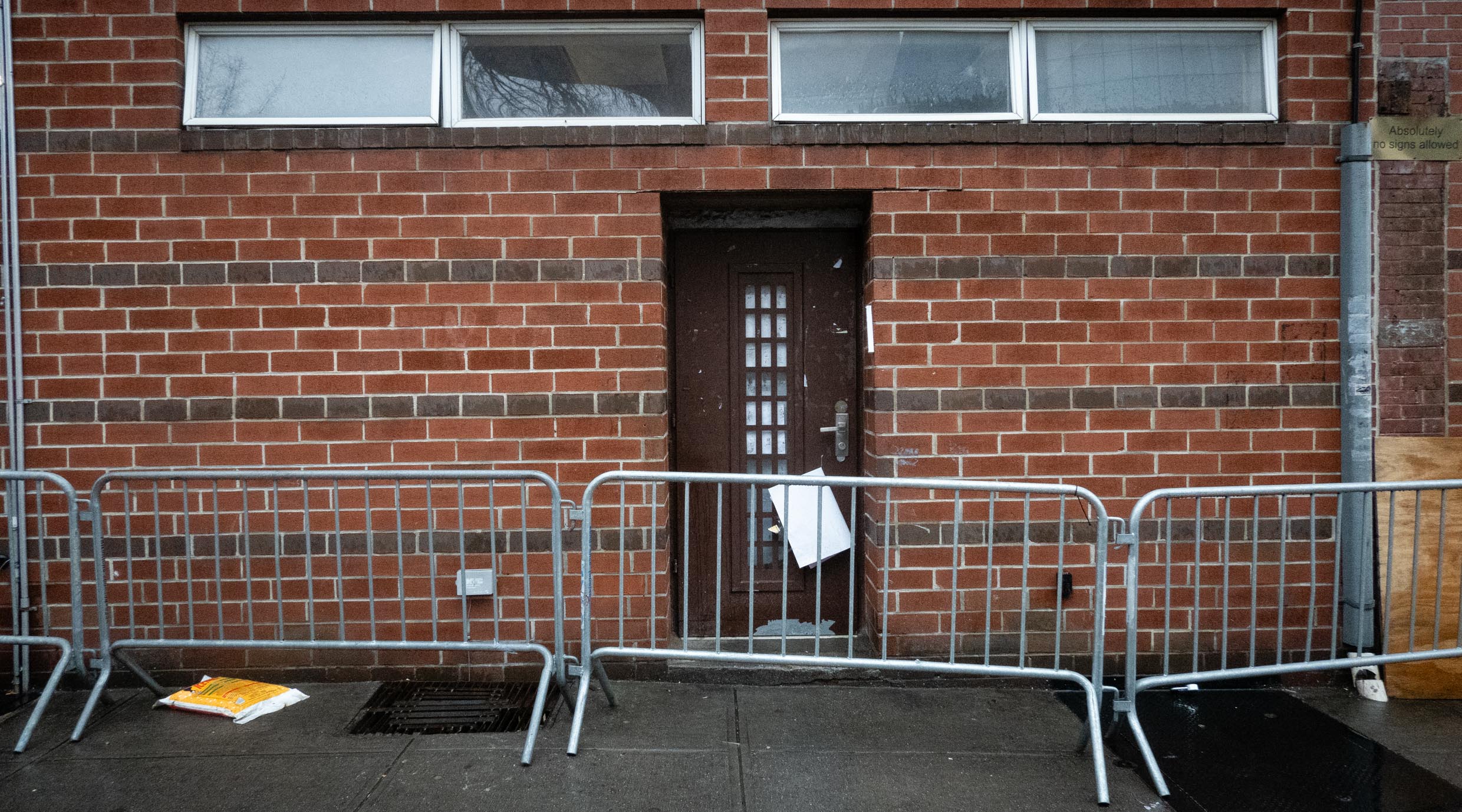
The entrance to a building adjacent to Chabad headquarters that was used for unauthorized excavations, Jan. 9, 2024. A man was seen fleeing from the metal grating to the left of the door during the incident. The grating has since been patched up. (Luke Tress)
The fracas has sparked a wave of antisemitic conspiracies online.
While Chabad representatives have stressed that the construction was the work of a renegade fringe of the movement, the fracas at 770, and false rumors of a “tunnel” network underneath the synagogue, have fed into a ream of jokes — as well as antisemitic conspiracy theories online.
The false claims include baseless allegations that the tunnels were used for trafficking children, echoing centuries-old antisemitic blood libels. In one widely circulated video, a Jewish man seen emerging from a sidewalk grate is said to be part of a secret tunnel network. On Tuesday, the grate had been resealed, and a look inside revealed a well-lit basement filled with stacks of blue plastic crates and wooden planks.
More broadly, the closure of the synagogue and the resulting antisemitism have caused anguish in the Chabad community.
“This is, obviously, deeply distressing to the Lubavitch movement, and the Jewish community worldwide,” said Motti Seligson, a Chabad spokesperson, wrote in a post on X.
“The police department and the city recognizes that this is a fringe group of people that don’t represent the vast majority of the community,” Behrman said. “We’re all pained that we have to deal with this.”
The New York Jewish Week brings you the stories behind the headlines, keeping you connected to Jewish life in New York. Help sustain the reporting you trust by donating today.
